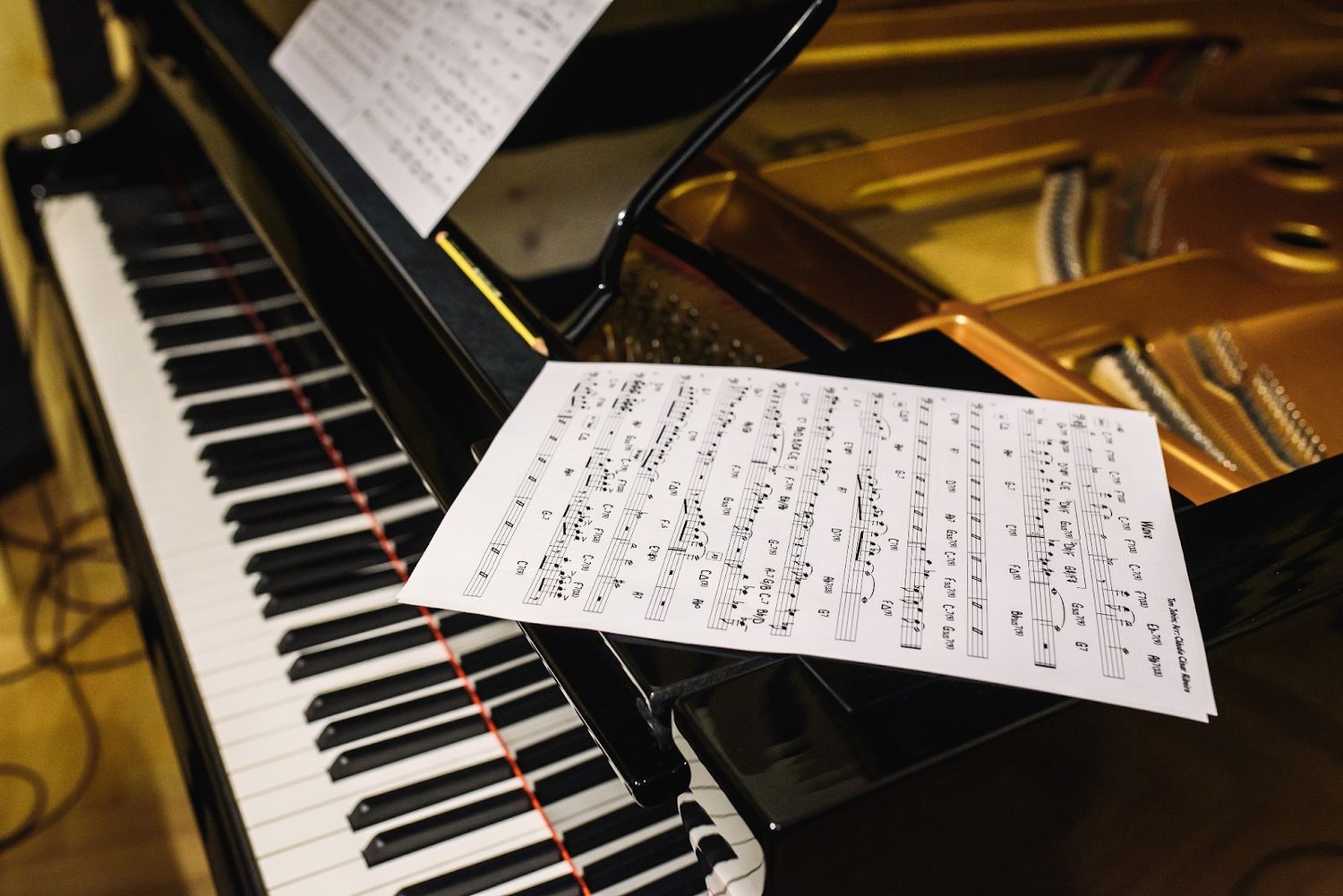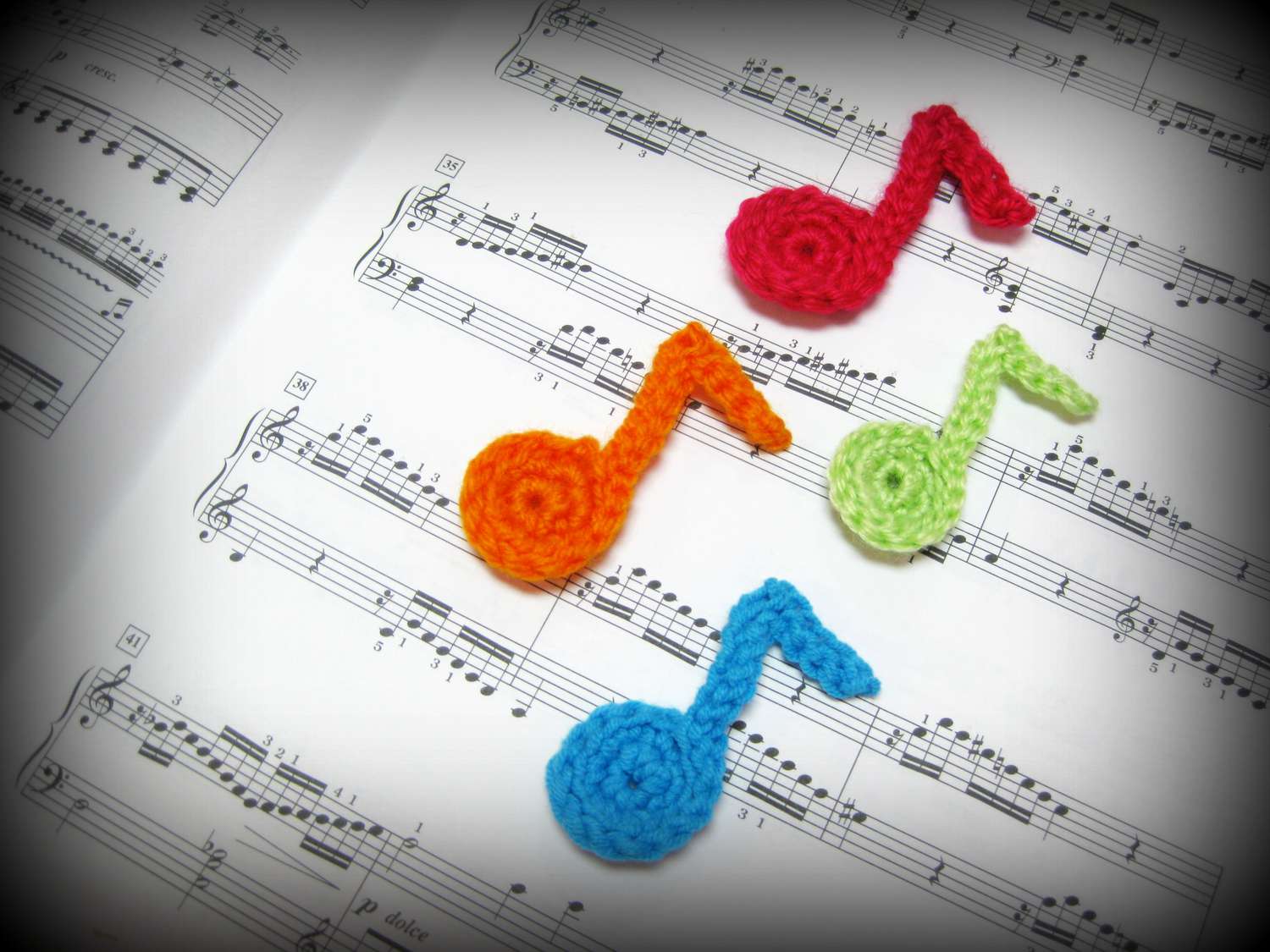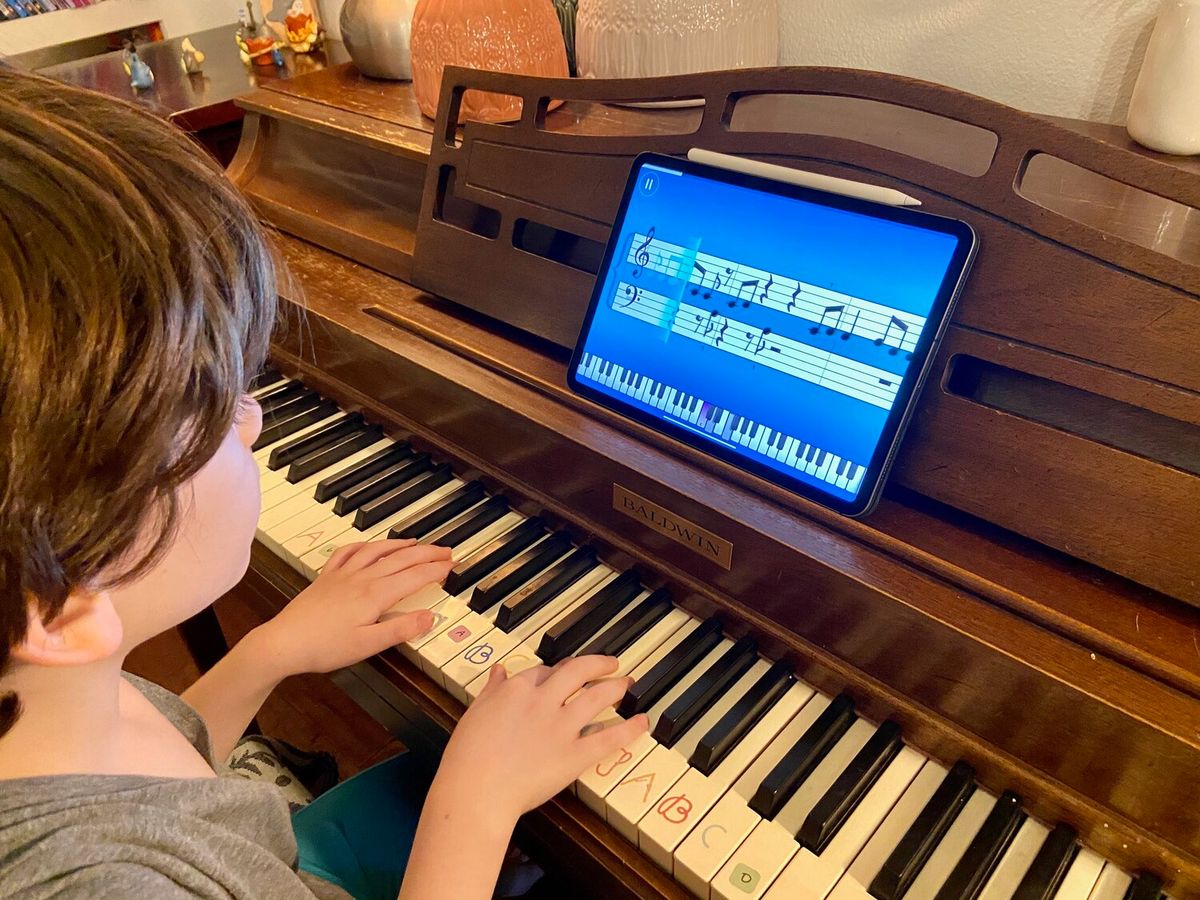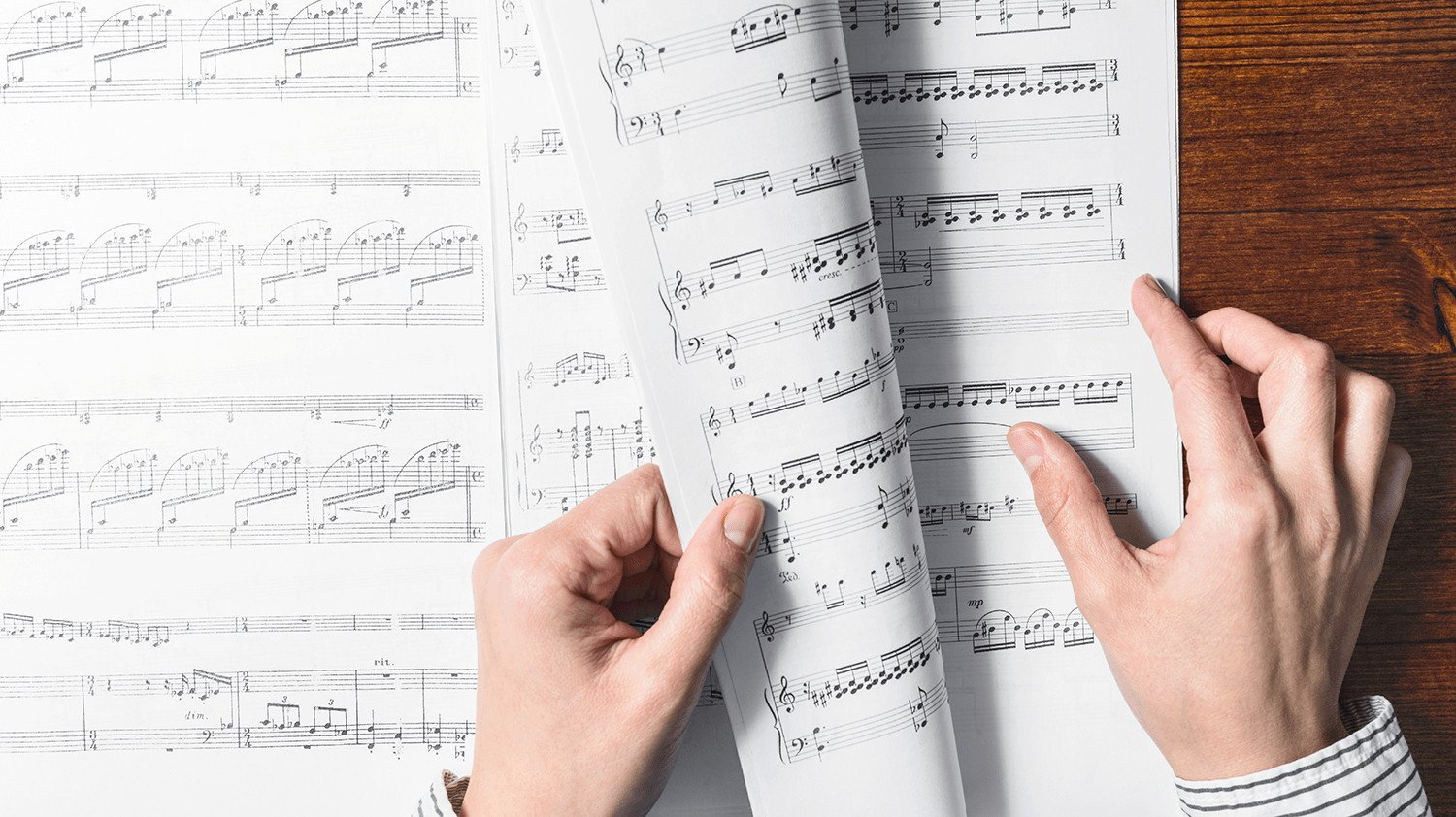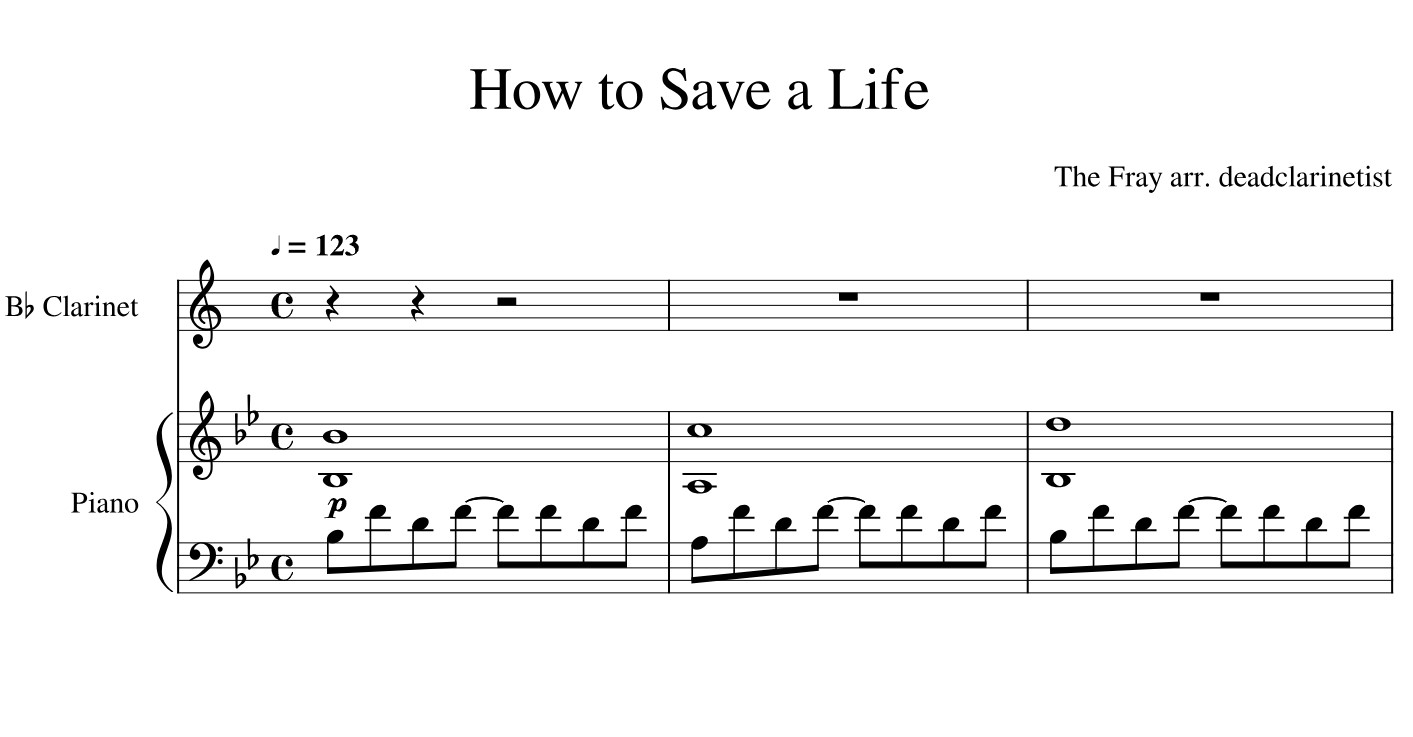Home>Instruments>Piano>How To Write A Piano Sheet Music
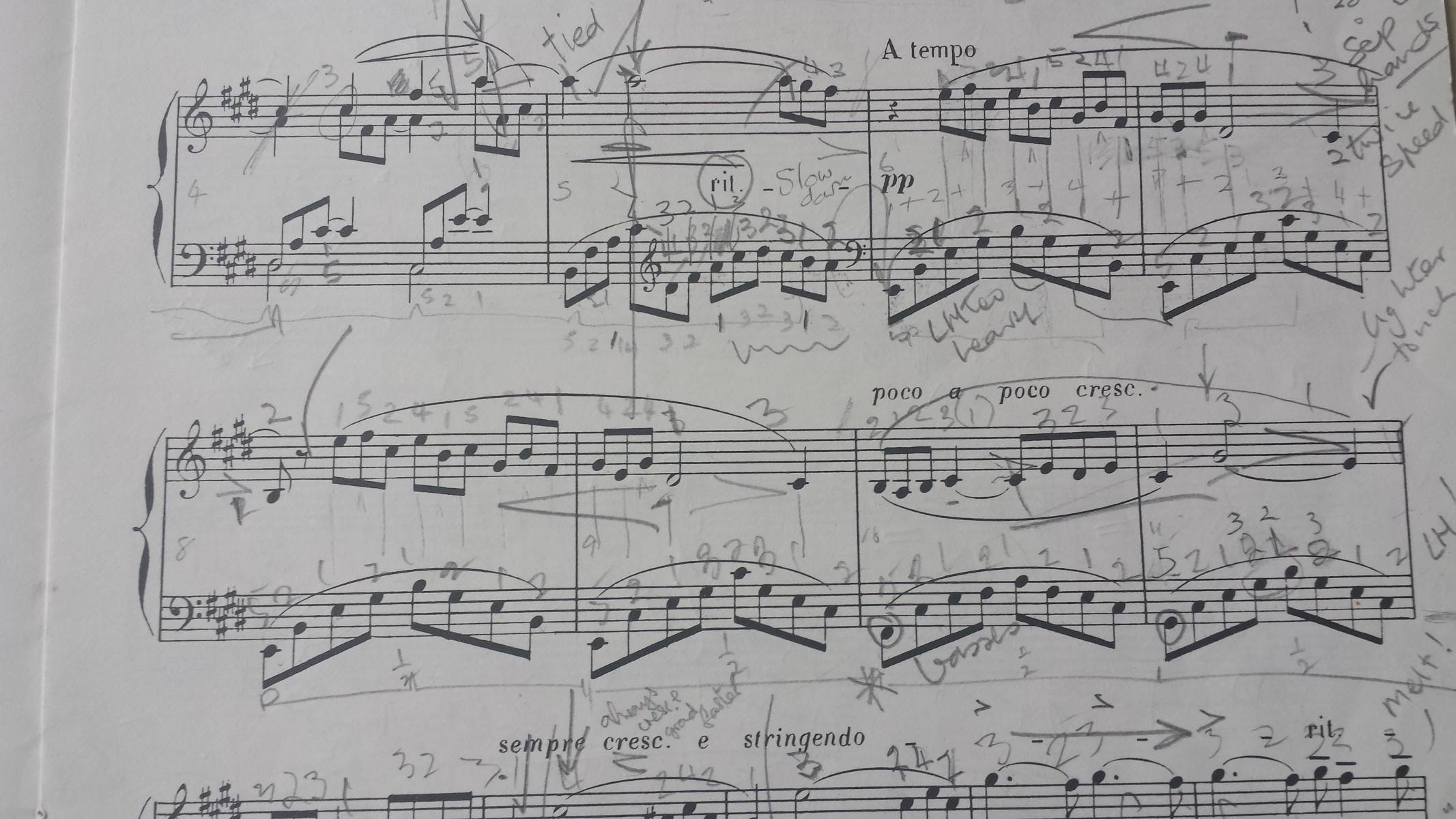

Piano
How To Write A Piano Sheet Music
Published: February 10, 2024
Learn how to write piano sheet music with our step-by-step guide. Master the art of composing beautiful melodies and harmonies for the piano. Discover essential tips and techniques for creating captivating piano compositions.
(Many of the links in this article redirect to a specific reviewed product. Your purchase of these products through affiliate links helps to generate commission for AudioLover.com, at no extra cost. Learn more)
Table of Contents
Introduction
So, you've composed a beautiful piece of music and want to share it with the world. One of the most effective ways to do this is by writing it out as piano sheet music. By notating your composition, you can preserve it for future generations, share it with other musicians, and potentially have it performed by pianists around the globe.
Creating piano sheet music may seem daunting at first, especially if you're new to music notation. However, with a basic understanding of musical elements and some guidance, you can effectively transcribe your musical ideas onto paper.
In this comprehensive guide, we'll explore the step-by-step process of writing piano sheet music. From understanding the basics of notation to adding dynamics and articulation, you'll learn how to transform your musical vision into a tangible and expressive form. Whether you're a seasoned composer or a budding musician, this guide will equip you with the knowledge and skills to create professional-quality piano sheet music.
So, grab your manuscript paper and sharpen your pencil (or open your notation software), as we delve into the art of writing piano sheet music. Let's embark on this musical journey together and bring your compositions to life on the grand staff!
Understanding the Basics of Piano Sheet Music
Before diving into the process of writing piano sheet music, it’s essential to grasp the fundamental elements of music notation. At its core, piano sheet music consists of two staffs, the treble clef for the right hand and the bass clef for the left hand, connected by a brace. Each staff comprises five lines and four spaces, representing different pitches.
When notating on the grand staff, the notes are positioned on specific lines and spaces, indicating their pitch. The treble clef, also known as the G clef, is typically used for higher-pitched notes, while the bass clef, or F clef, represents lower-pitched notes. Understanding the correlation between the notes’ placement on the staff and their corresponding pitches is crucial for accurately transcribing your musical ideas.
In addition to pitch, other essential elements of piano sheet music include note duration, time signature, and key signature. Note duration is denoted by different types of note symbols, such as whole notes, half notes, quarter notes, and so on, each representing a specific length of time. The time signature, displayed at the beginning of a piece, indicates the number of beats in each measure and the type of note that receives one beat. This information is vital for maintaining the rhythmic structure of your composition.
Furthermore, the key signature, located at the beginning of each staff, specifies the key of the piece and the notes that are consistently sharpened or flattened throughout the music. Understanding these basic notational elements will serve as the foundation for accurately transcribing your musical ideas onto the staff, ensuring that your composition is faithfully represented in written form.
By familiarizing yourself with these fundamental aspects of piano sheet music, you’ll be well-equipped to proceed to the next steps of writing and notating your composition. With a solid understanding of pitch, rhythm, and key signatures, you’re ready to embark on the creative journey of transforming your musical vision into a beautifully crafted piano score.
Choosing the Right Key and Time Signature
When embarking on the process of writing piano sheet music, selecting the appropriate key and time signature is a crucial initial step. The key signature determines the tonal center of your composition, influencing the overall mood and harmonic structure, while the time signature establishes the rhythmic framework and the organization of beats within each measure.
Choosing the right key for your composition involves considering the tonal qualities and emotional resonance of different keys. Each key imparts a distinct character and feeling, and the selection of a key can significantly impact the interpretation and expression of your music. For instance, compositions in C major often evoke a sense of brightness and simplicity, while pieces in E-flat major may convey a more lyrical and introspective quality. By carefully evaluating the tonal nuances of various keys, you can align the key signature with the intended emotional and sonic landscape of your composition.
Similarly, the time signature plays a pivotal role in shaping the rhythmic structure of your piece. Whether you opt for the common 4/4 time signature, which provides a steady and familiar rhythmic pulse, or experiment with unconventional meters like 7/8 or 5/4 to create rhythmic tension and intrigue, the time signature sets the rhythmic foundation for your composition. Understanding the rhythmic implications of different time signatures empowers you to craft compelling rhythmic patterns and phrasing within your piano score.
Furthermore, the interplay between the key and time signatures can profoundly influence the overall feel and flow of your composition. For instance, a composition in 3/4 time signature may exude a waltz-like elegance, while a shift to 6/8 time signature could infuse the music with a lively and dance-like quality. When combined thoughtfully, the key and time signatures harmonize to shape the musical landscape, guiding the performer and captivating the listener.
By thoughtfully selecting the key and time signature that align with the expressive intent of your composition, you lay a strong foundation for the notational journey ahead. These foundational choices set the stage for the melodic and harmonic elements that will soon grace the pages of your piano sheet music, shaping the musical narrative and evoking the desired emotional resonance.
Writing the Melody and Harmony
Once you’ve established the key and time signature for your piano composition, it’s time to breathe life into the score by crafting the melody and harmony. The melody serves as the heart of the piece, carrying the main musical theme and captivating the listener, while the harmony provides depth and richness, complementing the melody and shaping the overall tonal landscape.
When crafting a compelling melody, consider the contour, phrasing, and emotive qualities you wish to convey. A memorable melody often features a balance of stepwise motion and leaps, creating a sense of fluidity and interest. By experimenting with various melodic motifs and exploring different registers of the piano, you can sculpt a melody that resonates with the intended mood and evokes a lasting impression.
Simultaneously, the harmony plays a pivotal role in supporting and enhancing the melodic narrative. Whether you opt for lush, full-bodied chords or delicate arpeggiated textures, the harmonic progression should complement and enrich the melodic fabric, adding depth and emotional resonance to the composition. Consider the interplay between consonance and dissonance, as well as the harmonic rhythm, to infuse the score with compelling harmonic movement and tension.
Furthermore, the relationship between the melody and harmony contributes to the overall expressiveness of the composition. By aligning the melodic contour with the underlying harmonic progression, you can create moments of tension and release, crafting a nuanced musical journey that captivates the performer and resonates with the listener. Additionally, exploring techniques such as counterpoint and harmonic embellishments can elevate the melodic and harmonic interplay, imbuing the composition with intricacy and sophistication.
As you delve into the process of writing the melody and harmony, embrace experimentation and allow your musical intuition to guide you. Whether you’re sketching out a soaring lyrical melody or weaving intricate harmonic textures, trust your creative instincts and refine the interplay between melody and harmony to shape a captivating and evocative musical narrative.
With the melody and harmony taking form on the staff, your piano composition begins to blossom, inviting performers and listeners into a world of musical expression and emotive resonance.
Adding Chords and Accompaniment
As your piano composition evolves, the addition of chords and accompaniment enriches the harmonic tapestry, providing support and depth to the melodic elements. Chords serve as the harmonic foundation, shaping the tonal landscape and establishing the harmonic framework, while the accompaniment, whether in the form of arpeggios, broken chords, or rhythmic patterns, enhances the rhythmic and textural dimensions of the piece.
When incorporating chords into your piano score, consider the harmonic progression and voicings that best complement the melody. Experiment with various chord inversions and extensions to create rich, expressive harmonic textures that resonate with the emotional essence of the composition. Whether you opt for traditional triads, extended seventh chords, or lush open voicings, the harmonic choices should align with the expressive intent of the piece, elevating the melodic narrative and infusing the music with depth and color.
Simultaneously, the accompaniment patterns contribute to the rhythmic vitality and textural intricacy of the composition. Whether through gentle arpeggiated figures, pulsating rhythmic ostinatos, or dynamic chordal textures, the accompaniment breathes life into the music, providing a supportive backdrop for the melody while adding rhythmic drive and momentum. Consider the interplay between the melody and accompaniment, exploring rhythmic syncopations and contrapuntal textures to create a compelling and dynamic musical landscape.
Furthermore, the strategic use of dynamics and articulation within the accompaniment enhances the expressive quality of the composition. By varying the intensity of the accompaniment, incorporating subtle nuances in touch and articulation, and exploring the interplay between legato and staccato passages, you can imbue the accompaniment with a nuanced and evocative quality, elevating the overall performance and emotive impact of the piece.
As you integrate chords and accompaniment into your piano score, strive to strike a balance between harmonic richness, rhythmic vitality, and textural intricacy. Embrace the opportunity to craft compelling harmonic progressions and dynamic accompaniment patterns that enhance the melodic narrative and invite the performer and listener into a captivating musical journey.
With the addition of chords and accompaniment, your piano composition flourishes, resonating with expressive depth and immersive musical textures, ready to be brought to life on the keys.
Notating Dynamics and Articulation
Once the foundational elements of melody, harmony, chords, and accompaniment have been established, it’s essential to imbue your piano composition with expressive nuances through the notations of dynamics and articulation. Dynamics, encompassing the varying levels of volume and intensity, and articulation, defining the clarity and manner of execution, play a pivotal role in shaping the emotive quality and interpretive nuances of the music.
When notating dynamics, consider the ebb and flow of intensity throughout the composition. Utilize dynamic markings such as pianissimo (very soft), piano (soft), mezzo piano (moderately soft), mezzo forte (moderately loud), forte (loud), and fortissimo (very loud) to convey the desired volume and intensity levels. Additionally, explore gradual dynamic changes, indicated by crescendo (gradually getting louder) and diminuendo (gradually getting softer), to shape the overarching dynamic arc of the piece, infusing it with expressive depth and emotional resonance.
Simultaneously, articulation marks guide the performer in executing the notes with precision and clarity. Notations such as staccato (short and detached), legato (smooth and connected), accent (emphasized attack), and marcato (distinct and emphasized) delineate the manner in which the notes are to be articulated, shaping the rhythmic and textural nuances of the composition. By incorporating these articulation markings, you empower the performer to convey the intended phrasing and expressive nuances, enriching the musical interpretation and communicative power of the composition.
Furthermore, the strategic use of pedal markings, such as sustain pedal and una corda pedal, contributes to the tonal resonance and coloristic effects within the piano composition. By indicating the precise moments for pedal engagement and release, you shape the tonal blending and harmonic resonance, enhancing the sonic palette and emotive impact of the music.
As you notate dynamics and articulation, envision the expressive narrative and interpretive nuances you wish to convey. Embrace the opportunity to infuse the composition with dynamic contrasts, nuanced articulation, and pedal effects that elevate the emotive resonance and communicative power of the music, inviting the performer and listener into a rich and immersive musical experience.
With dynamics and articulation notated, your piano composition becomes imbued with expressive depth and interpretive nuances, ready to be brought to life through the performer’s sensitive and nuanced execution.
Finalizing and Editing the Piano Sheet Music
As you near the completion of your piano sheet music, the process of finalizing and editing plays a crucial role in ensuring the accuracy, clarity, and professional presentation of your composition. This phase involves meticulous attention to detail, refining the notational elements, and optimizing the score for readability and interpretive clarity.
Begin by reviewing the entire composition for accuracy in notation, including pitch, rhythm, and notational markings. Verify the consistency of key and time signatures, ensuring that they align with the harmonic and rhythmic structure of the music. Additionally, double-check the placement of notes, rests, and other notational elements to guarantee precision and clarity in the representation of your musical ideas.
Simultaneously, consider the visual layout and formatting of the piano sheet music. Pay attention to the spacing of notes, the alignment of musical elements, and the overall aesthetic presentation. A well-organized and visually appealing score enhances readability and facilitates a seamless interpretation for performers, contributing to a polished and professional presentation of your composition.
Furthermore, engage in a critical review of the expressive markings, including dynamics, articulations, and pedal indications. Ensure that these notations accurately convey the desired interpretive nuances and emotive qualities, empowering performers to articulate the music with sensitivity and expressive depth.
During the editing process, consider seeking feedback from fellow musicians or pianists who can offer valuable insights and perspectives on the notational clarity, interpretive markings, and overall playability of the composition. Embracing constructive feedback and incorporating suggested revisions can elevate the quality and interpretive clarity of your piano sheet music, refining it into a polished and compelling musical score.
Lastly, consider the practical aspects of the performance, such as page turns and navigational ease for the performer. Anticipating potential challenges in page layout and organization allows you to optimize the score for seamless performance, ensuring that the pianist can engage with the music fluidly and without interruption.
By dedicating attention to the finalizing and editing phase, you refine your piano sheet music into a meticulously crafted and artistically refined score, poised to engage performers and resonate with audiences through its expressive depth and interpretive clarity.
Conclusion
Congratulations on embarking on the enriching journey of writing piano sheet music. Throughout this comprehensive guide, we’ve delved into the intricacies of transforming musical ideas into a tangible and expressive form, guiding you through the process of notating melodies, harmonies, chords, and expressive markings to create a compelling musical narrative.
By understanding the foundational elements of music notation, including pitch, rhythm, key signatures, and time signatures, you’ve gained insight into the structural underpinnings that breathe life into your musical compositions. The artful selection of key and time signatures has empowered you to shape the tonal and rhythmic landscape, laying a strong foundation for the expressive journey ahead.
As you’ve explored the nuances of crafting melodies and harmonies, you’ve imbued your compositions with emotive depth and melodic resonance, shaping musical narratives that captivate performers and resonate with audiences. The strategic incorporation of chords and accompaniment has enriched the harmonic tapestry, infusing your music with textural intricacy and rhythmic vitality.
Furthermore, the notations of dynamics, articulation, and pedal markings have elevated the interpretive nuances and expressive depth of your piano sheet music, allowing performers to imbue the compositions with sensitivity and emotive resonance.
As you finalize and edit your piano sheet music, you refine it into a polished and professional score, ensuring notational accuracy, interpretive clarity, and visual appeal. This meticulous attention to detail enhances the readability and navigational ease for performers, optimizing the score for captivating and seamless performances.
By embracing the art of writing piano sheet music, you’ve embarked on a creative endeavor that transcends notation, inviting performers and audiences into a world of emotive resonance and musical storytelling. Your compositions, meticulously crafted and artistically refined, are poised to inspire and resonate with pianists and listeners, enriching the musical landscape with your unique artistic voice.
So, as you set out to write your own piano sheet music, remember to infuse each notation with your creative spirit, allowing your musical vision to unfold with expressive depth and interpretive clarity. Embrace the journey of crafting captivating musical narratives that resonate with the hearts and minds of performers and audiences alike.

